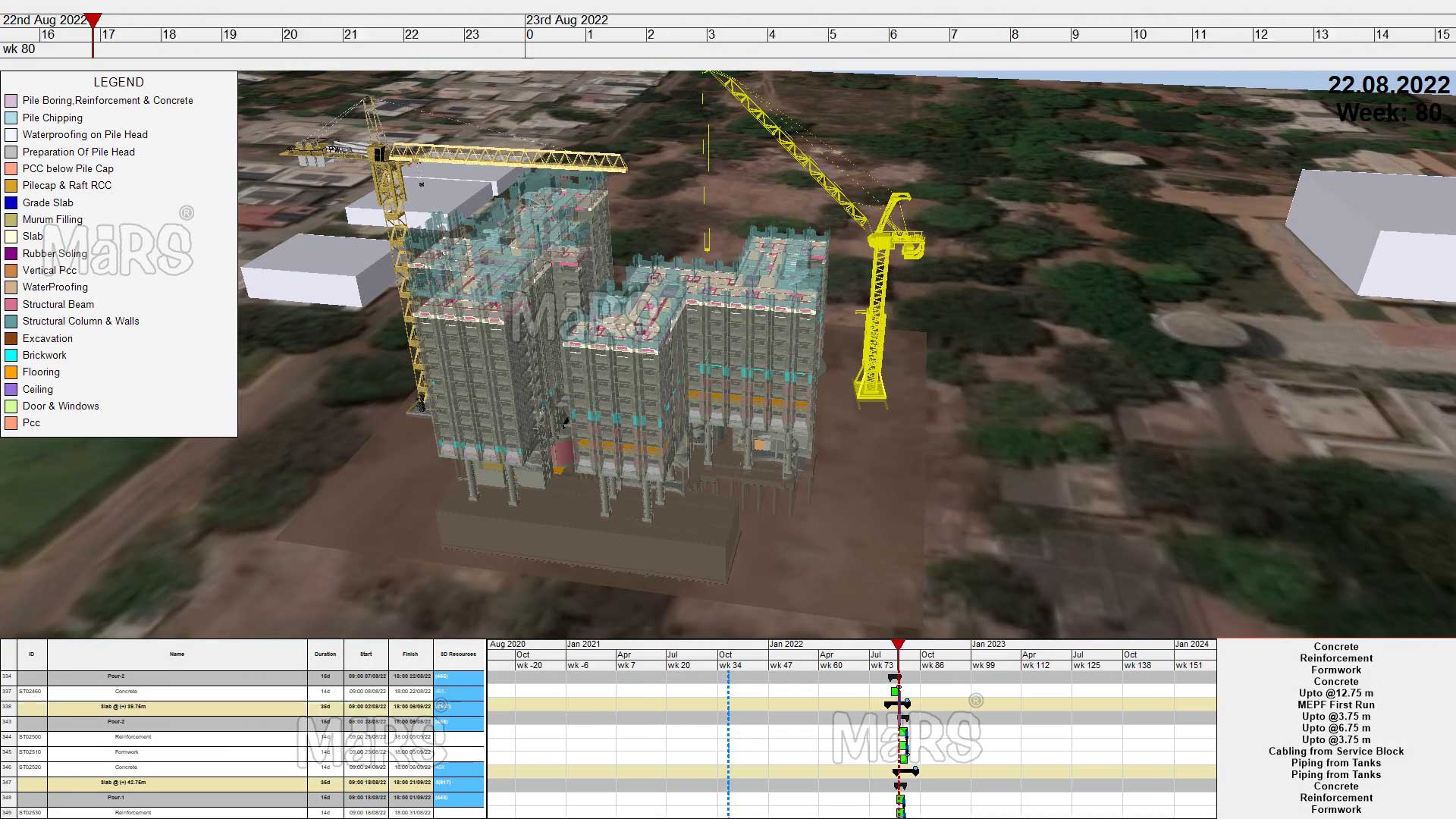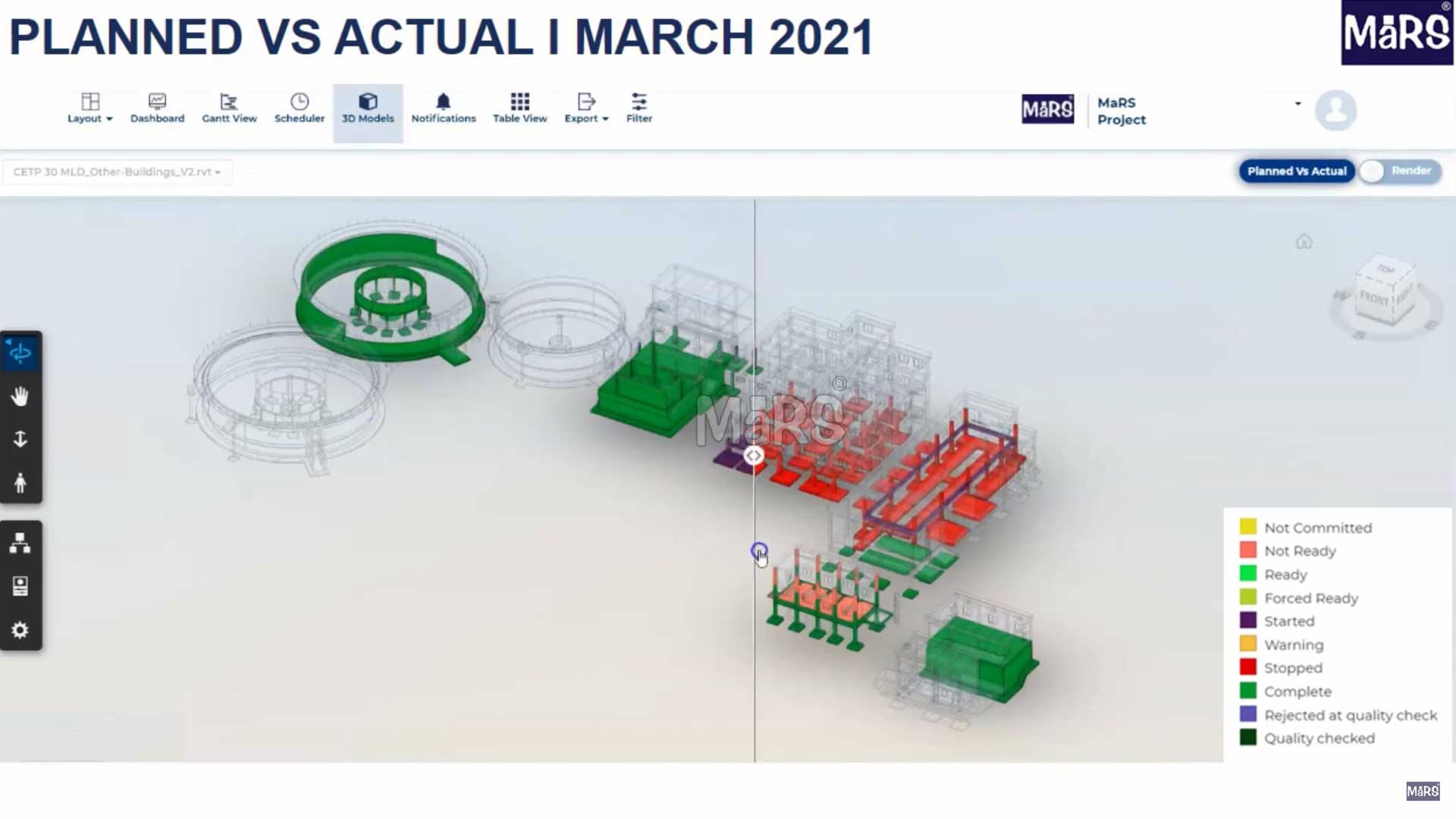Impact of leveraging BIM for construction management and monitoring in modern industry
Contents |
[edit] Background
Building Information Modelling (BIM) has emerged as a revolutionary technology in the construction industry, transforming the way projects are managed and monitored. BIM integrates the power of digital representation, collaboration, and data management to streamline construction processes, enhance project coordination, and facilitate effective decision-making. In this article, we delve into the significant role of BIM in construction management and monitoring and explore its benefits for the industry.
[edit] BIM: A Holistic Approach to Construction Management
[edit] Digital Twin Concept
BIM serves as a digital twin of the physical project, encompassing various building elements, systems, and processes. It allows construction professionals to create a comprehensive 3D model that accurately represents the project's design, specifications, and functionality. By mirroring the real-world construction project, BIM enables effective planning, coordination, and visualisation throughout the project lifecycle.
[edit] Enhanced Collaboration and Communication
One of the key advantages of BIM is its ability to facilitate seamless collaboration among project stakeholders. BIM platforms enable architects, engineers, contractors, and clients to work together in a shared environment, eliminating silos and enhancing communication. This collaborative approach minimises errors, reduces conflicts, and promotes greater transparency among team members.
[edit] 1. BIM for Construction Management
[edit] 1.1. Accurate Cost Estimation and Resource Planning
BIM enables accurate quantity takeoffs and cost estimation by linking digital models with cost databases. Construction managers can leverage BIM to generate precise material quantities, estimate costs, and plan resources accordingly. This empowers stakeholders to make informed decisions, optimise resource allocation, and prevent budget overruns.
[edit] 1.2. Construction Scheduling and Sequencing
By simulating the construction process in a virtual environment, BIM helps construction managers optimise construction sequencing and scheduling. BIM based scheduling allows for early identification of clashes, facilitates efficient resource allocation, and improves overall project timeline management. Construction teams can anticipate potential delays and devise mitigation strategies well in advance, minimising project disruptions.
[edit] 1.3. Clash Detection and Conflict Resolution
BIM's clash detection capabilities significantly reduce clashes and conflicts during construction. By integrating various design disciplines into a single model, BIM identifies clashes between different building systems, such as structural elements conflicting with mechanical systems. Early identification of clashes enables prompt resolution, avoiding costly rework and ensuring smooth construction progress.
[edit] 1.4. 4D BIM: Construction Scheduling and Visualisation
In addition to the three dimensions of BIM (3D), the fourth dimension (4D) incorporates time into the model, enabling construction managers to create a dynamic construction schedule. The use of 4D BIM for construction sequencing and scheduling helps visualization and communication effectively, providing a clear understanding of the project's timeline. This visual representation helps stakeholders identify potential clashes and optimize construction sequences, leading to improved project coordination and timely decision-making.
[edit] 1.5. 5D BIM: Cost Estimation and Control
Taking the capabilities of BIM even further, the fifth dimension (5D) integrates cost information into the digital model, allowing for accurate cost estimation and control throughout the project lifecycle. By linking the 3D model with cost databases and schedules, construction managers can track the costs associated with each element and stage of the project. 5D BIM for Construction Cost Estimation enhanced cost control empowers stakeholders to make informed decisions, identify cost-saving opportunities, and ensure project budgets are effectively managed.
[edit] 2. BIM for Construction Monitoring
[edit] 2.1. Real-Time Progress Tracking
BIM facilitates real-time monitoring of construction progress by linking the 3D model with project schedules and progress data. Construction teams can capture and update project data directly on-site using mobile devices, which is then synced with the BIM model. This allows for accurate tracking of completed work, identification of bottlenecks, and proactive decision-making to keep the project on track.
[edit] 2.2. Quality Control and Issue Tracking
BIM enables the implementation of comprehensive quality control processes by providing a visual representation of the project's components. Construction professionals can conduct virtual inspections, identify potential quality issues, and track their resolution. With the ability to annotate and document issues directly within the BIM model, the entire team remains aligned on the status of the project's quality and the necessary corrective actions.
[edit] 2.3. Facility Management and Operations
Beyond construction, BIM extends its benefits to facility management and operations. The digital twin created during the construction phase serves as a valuable asset for future maintenance and operations. Facility managers can access detailed information about building components, systems, and maintenance schedules, enabling efficient facility management throughout its lifecycle.
[edit] 2.4. Real-Time Progress Tracking with 4D BIM
By incorporating the time dimension, 4D BIM plays a crucial role in construction monitoring. Real-time progress tracking becomes more accurate and meaningful when visualised within the context of the construction schedule. Construction managers can compare the actual progress on-site with the planned schedule, enabling them to identify potential delays, optimise resource allocation, and take proactive measures to keep the project on track. This dynamic visualisation enhances communication among project stakeholders and supports efficient decision-making.
[edit] 2.5. Quality Control and Issue Tracking with 5D BIM
The integration of cost information in 5D BIM enhances construction monitoring and quality control efforts. By associating costs with specific building elements, construction managers can evaluate the impact of quality issues on the project budget. Any defects or discrepancies detected during the construction phase can be documented within the model, allowing for accurate cost tracking and resolution of issues. The use of 5D BIM ensures that quality control processes align with budgetary constraints, leading to improved project outcomes.
[edit] Related articles on Designing Buildings
- An interoperable construction industry.
- Asset information model.
- Asset information.
- Asset information requirements.
- Asset management.
- BIM co-ordinator.
- BIM and facilities management.
- BIM Interoperability benefits in the AEC industry.
- Building information modelling.
- CDM coordinator.
- CIC BIM Protocol.
- Clash avoidance.
- Collaborative practices.
- Coordination in the construction industry.
- Construction's interoperability challenge.
- Continental Automated Buildings Association CABA.
- Data portability.
- Design.
- Design coordination.
- Design coordinator.
- Design management.
- Facilities management.
- Facility management and technology.
- Government soft landings.
- Hard facilities management.
- Institute of Workplace and Facilities Management IWFM.
- Industry Foundation Classes IFC.
- Information manager.
- Integrated design.
- Internet of things.
- Interoperability: The ability of computer systems or software to exchange and make use of information
- Open data - how can it aid the development of the construction industry?
- PAS 1192-2:2013.
- Retrofit coordinator.
- The golden thread and BS 8644-1.
- Tolerances.
BIM Directory
[edit] Building Information Modelling (BIM)
[edit] Information Requirements
Employer's Information Requirements (EIR)
Organisational Information Requirements (OIR)
Asset Information Requirements (AIR)
[edit] Information Models
Project Information Model (PIM)
[edit] Collaborative Practices
Industry Foundation Classes (IFC)








Comments
[edit] To make a comment about this article, click 'Add a comment' above. Separate your comments from any existing comments by inserting a horizontal line.
Did you know you can create a company profile and associate that profile to an article already written. ?
That way the company profile will appear at the tope of each article, along with website and logo.
This is the consistent approach adopted by DB, any other forms of advertising, such as links within the article itself will usually be deleted.